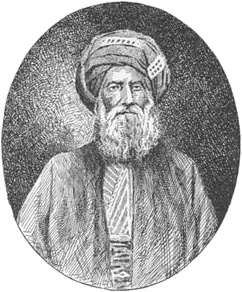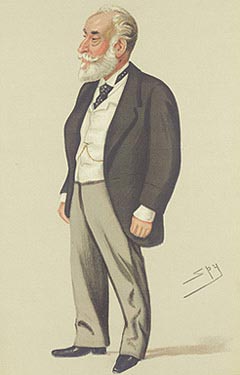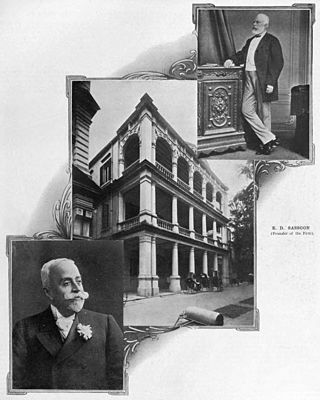Sir Ellice Victor Sassoon, 3rd Baronet was an Italian businessman and hotelier from the wealthy Baghdadi Jewish Sassoon merchant and banking family.

David Sassoon was the treasurer of Baghdad between 1817 and 1829. He became the leader of the Jewish community in Mumbai after Baghdadi Jews emigrated there.

Sir Albert Abdullah David Sassoon, 1st Baronet, was a Baghdad-born businessman and philanthropist.

There have been two baronetcies created for persons with the surname Buxton, one in the Baronetage of Great Britain and one in the Baronetage of the United Kingdom. One creation is extinct while the other is extant.

Sir Edward Albert Sassoon, 2nd Baronet was a British businessman and politician.
There have been ten baronetcies created for persons with the surname Browne, six in the Baronetage of Great Britain, three in the Baronetage of Ireland and one in the Baronetage of Nova Scotia. Only one creation is extant as of 2010. Three of the creations were for members of the Browne family headed by the Viscount Montagu.
There have been three baronetcies created for persons with the surname Bellingham, one in the Baronetage of England, one in the Baronetage of Ireland and one in the Baronetage of Great Britain. As of 2014 one creation is extant.

The Sassoon family, known as "Rothschilds of the East" due to the immense wealth they accumulated in finance and opium trade, are a Baghdadi Jewish family.

Elias David Sassoon, an Indian merchant and banker born in Baghdad, was the second son of David Sassoon, an Iraqi-Indian philanthropist Jewish businessman involved in trade in India and the Far East, with branches at Calcutta, Shanghai, Canton, and Hong Kong; and his business, which included a monopoly of the opium-trade, extended as far as Yokohama, Nagasaki, and other cities in Japan.
There have been five baronetcies created for persons with the surname Ward, one in the Baronetage of England, one in the Baronetage of Ireland and three in the Baronetage of the United Kingdom. See also Warde baronets.
Three Baronetcies have been created for persons with the surname Johnson: one of New York in 1755 in the Baronetage of Great Britain, and then one of Bath (1818) and one of Dublin (1909), both in the Baronetage of the United Kingdom. As of 2010 the Johnson baronetcy of Bath is dormant, and that of Dublin is extinct.

There have been three Baronetcies created for persons with the surname Seymour, two in the Baronetage of England and one in the Baronetage of the United Kingdom. One creation is extant as of 2008.
There have been four baronetcies created for persons with the surname Hay, all in the Baronetage of Nova Scotia. Two creations are extinct, one dormant and one extant. A fifth baronetcy in the Jacobite Peerage, although theoretically extant, is not recognised by the Lyon Office.

The Sassoon Mausoleum is the former grave of Sir Albert Sassoon and other members of his family, including Sir Edward Sassoon, 2nd Baronet, of Kensington Gore. It stands at 83 St. George's Road in Brighton, England. The single-storey building, which is Grade II listed, has since served as a furniture depository and an air-raid shelter, and since being purchased by a brewery in 1949 has remained a pub or bar.
Sassoon as a name may refer to:
The David Baronetcy, of Bombay, was a title in the Baronetage of the United Kingdom. It was created on 12 December 1911 for the Baghdadi Jewish businessman Sassoon David. He was succeeded by his son, Percival, the second Baronet, who became an important collector of Chinese porcelain. The title became extinct on the latter's death in 1964.

E.D. Sassoon & Co., Ltd. was a trading company operating in the second half of the 19th century and the first half of the 20th century predominantly in India, China and Japan.
Following the final collapse of the Mughal Empire in 1857 and the proclamation of the British Indian Empire, the British continued to maintain and recognise many of the old Mughal and Hindu styles and titles, introducing a compound honours system which awarded those titles along with British noble and aristocratic titles and knighthoods. Uniquely amongst the countries under British dominion, India was the sole country where British hereditary titles were conferred upon British subjects not of European ancestry. All British titles and honours became obsolete after the formation of the modern Republic of India in 1950, though they continue to be recognised by the British government. The Portuguese gave titles and created coats of arms for its Goan citizens from the early 1700s, both Hindu and Indian Christian. These titles however lost their recognition after the Portuguese Revolution and start of the First Portuguese Republic in 1910.









